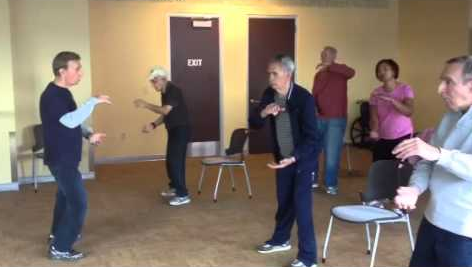
By John M. de Castro, Ph.D.
In today’s Research News article “Tai Chi improves balance, mobility and gait function of the lower limbs in patients with Parkinson’s disease: a systematic review and meta-analysis” (See summary below or view the full text of the study at: https://pmc.ncbi.nlm.nih.gov/articles/PMC11831811/ ) Lou and colleagues review and summarize the published research studies of the effectiveness of Tai Chi practice for the motor functions of patients with Parkinson’s Disease. They report that the published research found that Tai Chi practice improves balance, mobility, and gait speed in patients with Parkinson’s Disease compared to patients undergoing conventional therapies.
Tai Chi practice improves motor function in patients with Parkinson’s Disease.
CMCS – Center for Mindfulness and Contemplative Studies
This and other Contemplative Studies posts are also available on the Contemplative Studies Blog http://contemplative-studies.org
Study Summary
Lou L, Xiang C, Hu Y, Yang J. Tai Chi improves balance, mobility and gait function of the lower limbs in patients with Parkinson’s disease: a systematic review and meta-analysis. Eur J Med Res. 2025 Feb 17;30(1):107. doi: 10.1186/s40001-024-02151-5. PMID: 39962570; PMCID: PMC11831811.
Abstract
Objective
This study aimed to systematically evaluate the effect of Tai Chi on the balance function, mobility function, and gait function (including gait endurance, gait amplitude, and gait speed) of the lower limbs in patients with Parkinson’s disease.
Methods
The “PICOS” principle was used to search seven English and six Chinese databases. Search for relevant studies published up to September 11, 2023, from the date of database creation. Two authors independently screened all eligible studies. The included studies were assessed for risk of bias based on the criteria outlined in Cochrane Handbook 5.1.0. Quantitative statistics and meta-analyses were conducted using Review Manager 5.4 software.
Results
Th 18 studies that met the inclusion criteria, 16 of which were included in the meta-analysis, included a sample of 963 cases from four countries. The meta-analysis revealed that Tai Chi was effective compared with conventional medication in improving balance function (MD = 2.06, 95% CI [1.35, 2.78], P < 0.00001, I2 =0%), mobility function (MD = − 1.59, 95% CI [− 2.28, − 0.91], P < 0.00001, I2 =14%), and gait speed (SMD =0.59, 95% [0.28, 0.91], P = 0.0002, I2 =29%). However, there was no significant improvement in gait endurance (SMD = 0.14, 95% CI [−0.41, 0.68], P =0.62, I2 = 0%) or gait amplitude (SMD =0.30 , 95% CI [− 0.00, 0.61], P = 0.05, I2 =0%). Compared with other exercise therapies, Tai Chi was significantly superior in improving balance function (MD = 3.05, 95% CI [1.94, 4.16], P <0.00001, I2 = 38%), mobility function (MD =−0.70, 95%CI [− 1.23, − 0.17], P = 0.01, I2 = 0%), and gait range (SMD = 0.36, 95% CI [0.14, 0.58], P = 0.002, I2 = 45%). However, the advantage of improving gait speed (SMD =0.00, 95% CI [− 0.28, 0.29], P = 0.98, I2 =0%) was uncertain.
Conclusion
Tai chi is a safe and effective rehabilitation intervention that can enhance the balance and mobility functions of the lower limbs in patients with Parkinson’s disease.